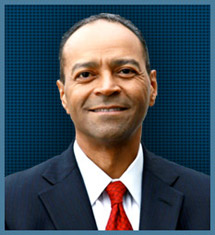 America's housing finance system is in what some call a "dysfunctional limbo." Not only is it underperforming, but it is also outdated and in desperate need of a complete revamping among its mission, activities, products, and services.
America's housing finance system is in what some call a "dysfunctional limbo." Not only is it underperforming, but it is also outdated and in desperate need of a complete revamping among its mission, activities, products, and services.
In an essay published by the Urban Institute, James H. Carr, a housing finance, banking, and urban policy consultant and former VP of Housing Research at Fannie Mae, explains how to transform Fannie Mae and Freddie Mac into a new, single corporation.
"The basic pillars of our modern housing finance system were enacted in the 1930s during the Great Depression. Since then, there have been major shifts in the US economy, demographic composition, and spatial location of the population," Carr stated. "These important reconfigurations in our economy and society demand greater intervention and bolder vision than simply attempting to better manage the risks posed by an underperforming and outdated system."

James H. Carr
Prior to the housing crisis, the America's housing finance system suffered from inadequate regulatory oversight, misguided incentive structures, inefficient leveraging of private capital and insufficient risk-sharing arrangements, an unfunded explicit federal guarantee, and inadequate service to diverse market segments, according to Carr.
So what's the fix to an outdated housing finance system? Carr suggests transforming Fannie Mae and Freddie Mac into a new National Housing and Community Investment Corporation (NHCIC).
Carr noted that features of the NHCIC include merging Fannie Mae and Freddie Mac into a new government corporation that would continue to perform all the basic mortgage market operations of the current GSEs with some modifications, including the following:
- Providing an explicit federal guarantee on mortgage-backed securities
- Maintaining catastrophic risk while transferring all noncatastrophic risk to the private sector
- Maintaining a portfolio for distressed loans and to aggregate single- and multifamily loans for securitization (but prohibiting the use of that portfolio for investment purposes)
- Ensuring equal access to lenders of all sizes
- Adjusting guarantee fees in a way that enables homeownership for creditworthy, lower-income households
- Collecting fees to support access and affordability for homeownership and rental housing
- Maintaining the Federal Housing Finance Agency as the new corporation’s regulator
"These key structural elements ensure a well-functioning mortgage market by more clearly defining the appropriate roles for private versus public capital, improving lender access to the new entity’s securitization platform, shoring up the ability for duty-to-serve requirements to be met, continuing today’s support for rental housing finance, and leveraging the best of the private sector and government with a government corporation structure," Carr wrote.

 theMReport.com Your trusted source for mortgage banking news
theMReport.com Your trusted source for mortgage banking news








